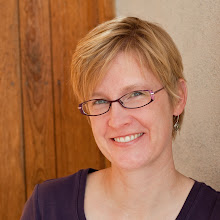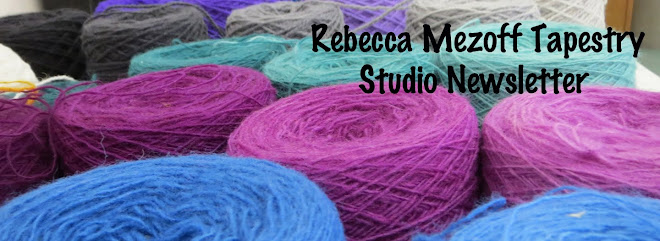Last week I went to Detroit for two purposes. The first is a secret. The second was a day teaching weaving in an alternative high school. My cousin, Mrs. McNeece, is the art teacher there.
From fairly "short" TSA lines at Denver International Airport, I jumped right into my cousin's car at Detroit Wayne-County and she motioned to the box of 94 cardboard looms in the back seat and said, "Start warping."
We did finish warping all of those looms that evening and they were ready to go for her five sections of art the next day.
 |
| Wagon of looms |
And who is going to turn down an invitation to be a guest artist in a room full of teenagers for a whole day?
Now to be honest, I'm not the best with teenagers. They move quickly, their behavior is erratic, and they are big. But this lot turned out to be rather enchanting. These kids have been sent to this alternative high school for extra help and support. And many of them are thriving here.
My cousin's husband warned me that morning that I might learn some new swear words. I didn't, but there were a few phrases that definitely needed some translation. For example Duane's, "That shit lows [low key] is hard." I am pretty sure that he meant both that it was hard to do the weaving and that he nailed it. He made one of the best weavings of the day, so we're going with that interpretation.
This is Randall. By the last hour of the day, I was a little fried. This had little to do with the kids and more with a whole day of trying to navigate a new and frankly rather feisty environment. Randall jumped into this weaving project with gusto. Despite the chaos that was last period, he figured out that over-under pattern in short order.
Many of these kids have some motor planning issues and none of them had done any weaving before. I was really impressed at how almost all of them jumped into the project. A few of them even filled their looms in the hour.



And the hero of it all was their art teacher, Molly McNeece. She pushes these kids every day. She teaches them responsibility and how to follow through. She also teaches them about art and that they too can be successful at making things. That knowledge translates to other things in their lives. She often has graduates come back and tell her that her insistence that they do their work was the thing that got them to (and through!) college. That folks, is the definition of success. It does not come without a price. These teachers don't get many breaks and usually when they do, they use them to help whatever kid is in crisis that day. We won't even mention what they are paid, but believe me, it should be at least doubled. Mrs. McNeece's room is a place they can be successful and the kids gravitate to it.
And while I was in Detroit, I spent some marvelous time with my oldest friend. We met in preschool, were college roommates, and still like each other all these decades later.
I also got to snuggle with a couple Rottweilers and hang out with my marvelous cousins, goofiness and all.
 |
| Top left clockwise: Me and Tulip; breakfast at sunrise cafe with Molly and Ella; the amazing Bill, master of the double nose-flute; clay faces made by Molly's students; me teaching weaving; center: CJ, the big-hearted beagle. |
This is the only hint you're going to get about my first reason for the trip.
Molly McNeece is an illustrator who just published her second book. The first was an amazing digital book called
Surviving the Zombie Apocalypse which she created with her husband, Alex McNeece. If you have an iPad or iPhone, you're going to want to get this book. It is sort of a choose-your-own adventure zombie romp and the illustrations are amazing. (Also, it is currently priced at $1.99.) It is so cleverly done. Make sure to look for the extra hidden illustrations. Her new book is
Joshua and Jasmine go to Kindergarten, published by Nelson publishing. It will be released any day now. Make sure to visit Molly's website
HERE.
"Yo! McNeece!"


























































